Musical Surroundings Phonomena III Phono Preamp With Optional Linear Power Supply Upgrade
The Michael Yee designed, California made, phono stage gets an upgrade
The Phonomena III with (and without) the upgraded Linear Power Supply (LPS)
Is high end audio practical? If you ask the average Joe on the street, a $5,000 pair of speakers is not practical. However, if you ask Tracking Angle readers, my guess is most would think that $5,000 is a pretty reasonable price. One might even say that listening to vinyl is not practical.
Within the world of hi-fi, some components are more practical while others are more esoteric. I have purchased equipment that wasn't the most logical choice just because I wanted it… badly. Some equipment makes you drool and some simply does its job extremely well and goes unnoticed.
The Musical Surroundings Phonomena III ($1,200) is the newest version of the Michael Yee designed and California made phono stages that have been in production since 1999.
Yee's long-lived phono preamps have had relatively few upgrades over the years so when one is announced it's likely the changes are considerable and significant.
When asked about the specifics that turn the Phenomena II into the III Yee told me,
"The Phonomena III represents a phono preamp that ‘I’ want to have in my system. It is small. It uses the highest performing super matched pair of input transistors for low noise and sound quality where the Phonomena II did not. The Phonomena III uses very low impedance power supply capacitors and the values are increased quite a bit. A gain setting of 66dB is possible. “
I can say up front, that in addition to these changes, the Phenomena III is a very practical design.
The New Musical Surroundings Phonomena III
The new phono stage introduced at Axpona 2023 features all discrete circuitry, a new super matched pair of input transistors plus an upgraded circuit board and layout. The ultra-flexible Phonomena III features adjustable gain from 40dB to 66dB in multiple steps, as well as extensive resistive loading options that allow precise coil impedance matching. RIAA is implemented with a hybrid passive/active filter.
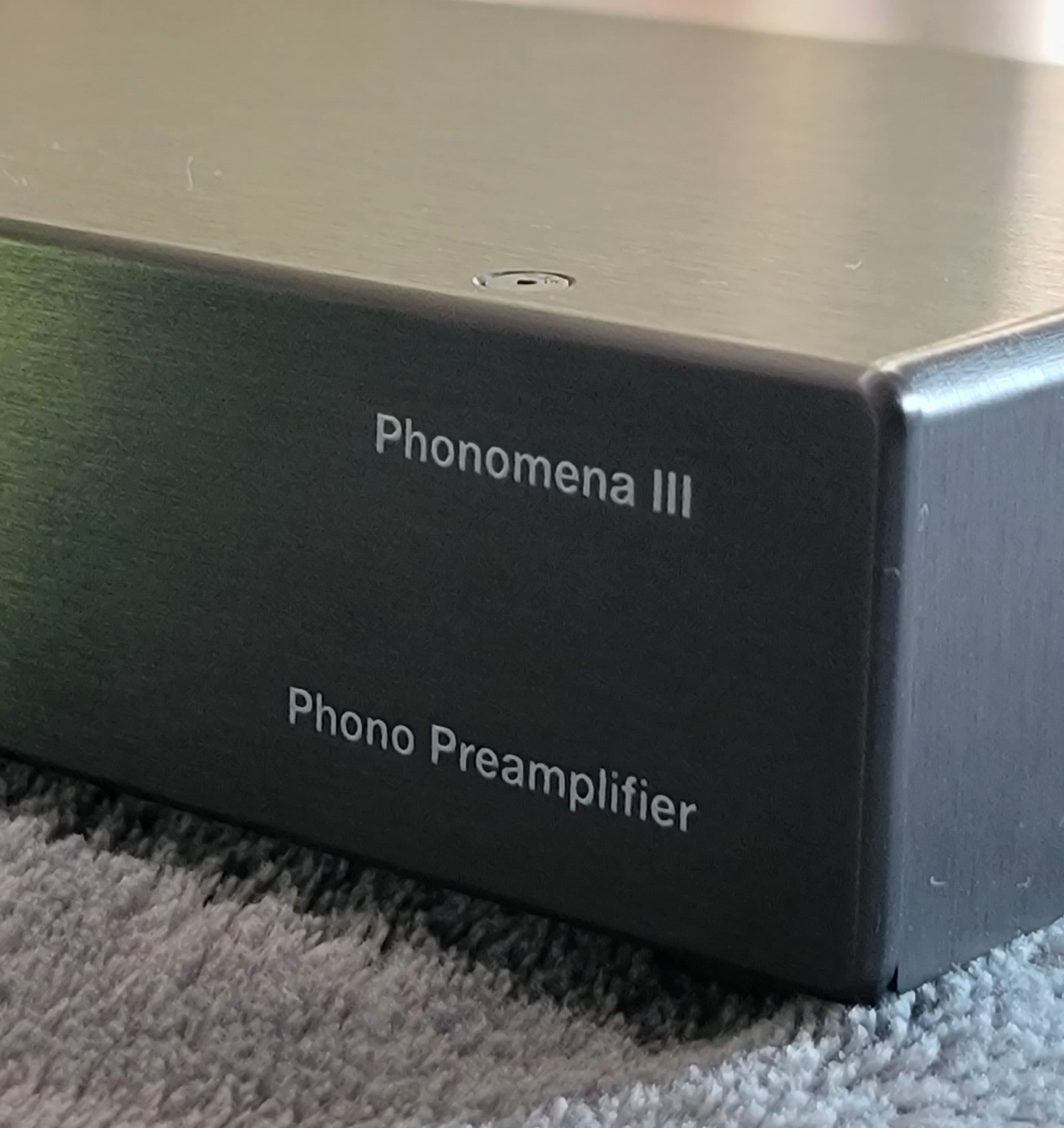 The Upgrade Path
The Upgrade Path
At the $1,200 price point the Phonomena III comes stock with a wall wart power supply. Although I'm not a wall wart fan I understand that using one can help a product achieve a large percentage of its ultimate performance at a significantly lower price, thus getting it in the hands of more audiophiles.
Musical Surroundings takes a much appreciated practical approach to providing an easy upgrade path for music lovers afflicted with semi-annual upgradeitis with its $1000 power supply upgrade.
Pricing the Phonomena III at $1,200 plus an upgraded power supply option for an additional $1,000 lets the III compete at two very attractive price points while providing future expandability. Though Musical Surroundings is not the only company to do this (Naim comes to mind), it is not commonplace, however, in a word it is practical.
Unpacking the Phonomemna III with the LPS
Upon first unpacking the Phonomena III and the power supply, I noticed that unlike many sub rack mount sized components, these did have some weight to them. The rounded aluminum casing and faceplate fit together perfectly. High quality RCA jacks add to the nice fit and feel of the otherwise undistinguished little boxes that do not scream "look at me!".
I initially stacked the phono stage on top of the LPS, which turned out to be a mistake. Upon firing up the system, I heard a distinctive hum. I rechecked all of my grounds and eventually moved the phono stage from on top, to beside the LPS. The hum immediately went away.
Later, I read the manual (something I always do last) and noted it says to not stack the units because doing so can induce noise (that's generally true and not unique to this phono preamp_ed.). Once not stacked, the Phenomena III was dead silent. The form factor lets both the Phonomena III and the LPS fit in a standard rack, looking like twins sitting side by side.
High gain phono preamps can easily pick up and pass noise. In single box units power supplies can induce noise unless shielding is carefully applied. As I discovered here, even outboard supplies not carefully placed can do likewise.
At the low end of the phono preamp market, using a "wall wart" has two benefits: it creates distance between the power supply and signal carrying circuitry and it saves the cost of a second chassis. The downsides are the inherent limitations of most "wall wart" (digital switching power supply noise) —unless you offer a power supply upgrade.
A Smorgasbord of Adjustments
One of the most impressive aspects of the Musical Surroundings Phonomena III is the flexibility to match just about any cartridge, regardless of output or internal impedance—MM or MC. The dual mono design means each channel must be separately set for both loading and gain. Start with the cartridge manufacturer's suggested loading but don't be afraid to experiment within a reasonable range around it.
Resistive Loading
The Phenomena III provided a usually wide range of loading options at this or any price point—a total of sixteen: 30Ω, 40, 50, 59, 80, 100, 121, 150, 243, 280, 380, 475, 660, 1000, 2,000, 47kΩ and 100kΩ. The 100kΩ MM option is particularly useful for MM phono since the 47kΩ "standard" isn't really a standard and some MM cartridges sound and measure more linear at 100k. Set high output MC cartridges at 47kΩ.
When setting the MC cartridge resistive loading, start with the manufacturer's suggested load setting or by using the 10X rule, which is to set loading at 10X the cartridge's internal impedance. For example start with 80 ohm loading for the 8 ohm internal impedance Hana Umami Blue. Lower resistive loading generally produces increased image focus and solidity along with tighter bass, while higher settings open up the higher frequencies, though it's important to not confuse non-linear rising high frequency response with "more air".
Capacitive Loading
Lastly, you have a choice of 100pF or 200pF capacitive loading, which is used with moving-magnet cartridges and has little or no effect on moving-coil cartridges, though there's no harm in trying either setting. When setting MM capacitive loading check with the manufacturer's suggested setting and be sure to add the cable's capacitance to the total if you know it.
Gain Adjustments
The Phonomena III offers 12 gain steps between 40dB and 66dB, which is quite impressive for a $1,200 phono stage. 40dB is the MM default setting and for the most part that is the correct MM gain setting since most MM cartridges output between 4 and 5mVs (millivolts). Higher settings should only be used with if you come across an unusually low output MM cartridge, especially if you don't know the phono preamp's overload margin.
High output moving coil cartridges are designed to work with MM phono preamps so generally 40dB and 47kΩ are the correct load and gain settings, unless the high output MM is on the low side of high, in which case you can try somewhat higher gain settings but again be careful of overloading the input. 50dB-58dB is best for medium output MCs (.9-1.5mV), 60dB-66dB work best with low output cartridges.
If you wish, you can fine tune your gain among the many options within the recommended range to optimize your system's signal-to-noise ratio or to match the phono preamp output to other source components when you switch among them.
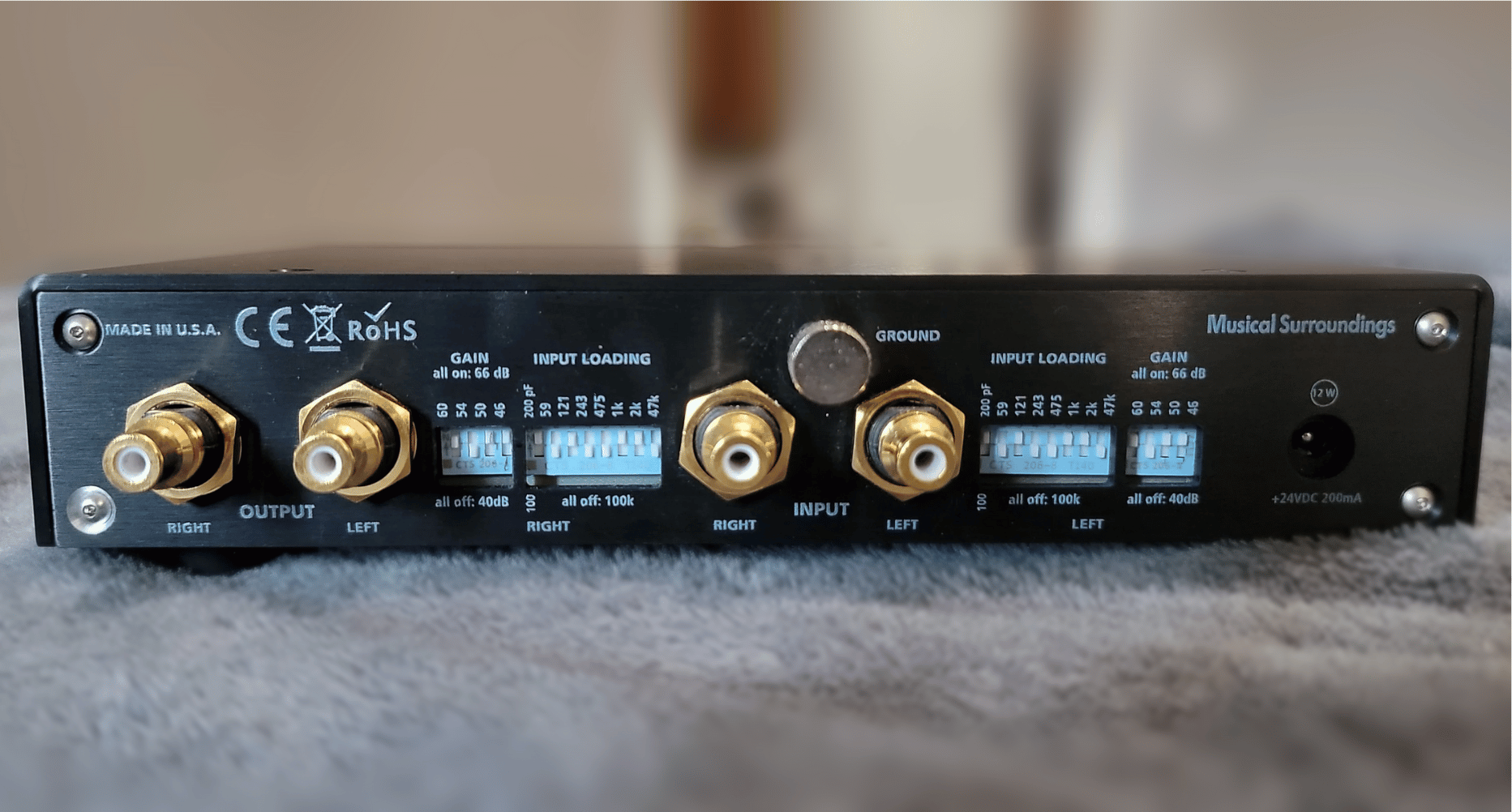 Matching to Your System
Matching to Your System
The mating of your cartridge/interconnect to the phono stage is a critical step in fine tuning your system. I must admit, I became a little obsessed with finding the perfect cartridge loading and gain adjustments.
With so many options, I felt like I was 13 again with an equalizer trying to find the perfect sound. In the end, I appreciated the opportunity to explore the variety of settings and was able to dial in the matching of my components.
The plethora of adjustments to perfectly match your system makes the Phonomena III a very practical product. You can change interconnects and cartridges and feel confident in the ability to optimize their performance or simply tweak the overall sound.
The Linear Power Supply (LPS)
Michael Yee has a long history of research into power supply design, all of which has gone into the design of the new $1000 Linear Power Supply (LPS), originally developed for the company's flagship $5,000 SuperNova III phono stage where it was used to charge that unit's battery packs. It uses a Tamura transformer with multiple regulation stages and senses line voltage, alerting the end user if used with the incorrect mains voltage.
The LPS uses a 50/60 Hz transformer and large storage and filter capacitors that are part of a noise reduction circuit designed to produce low noise, low dropout, and linear voltage regulation using Analog Devices Linear Technologies LT1965 and LT3015 regulators.
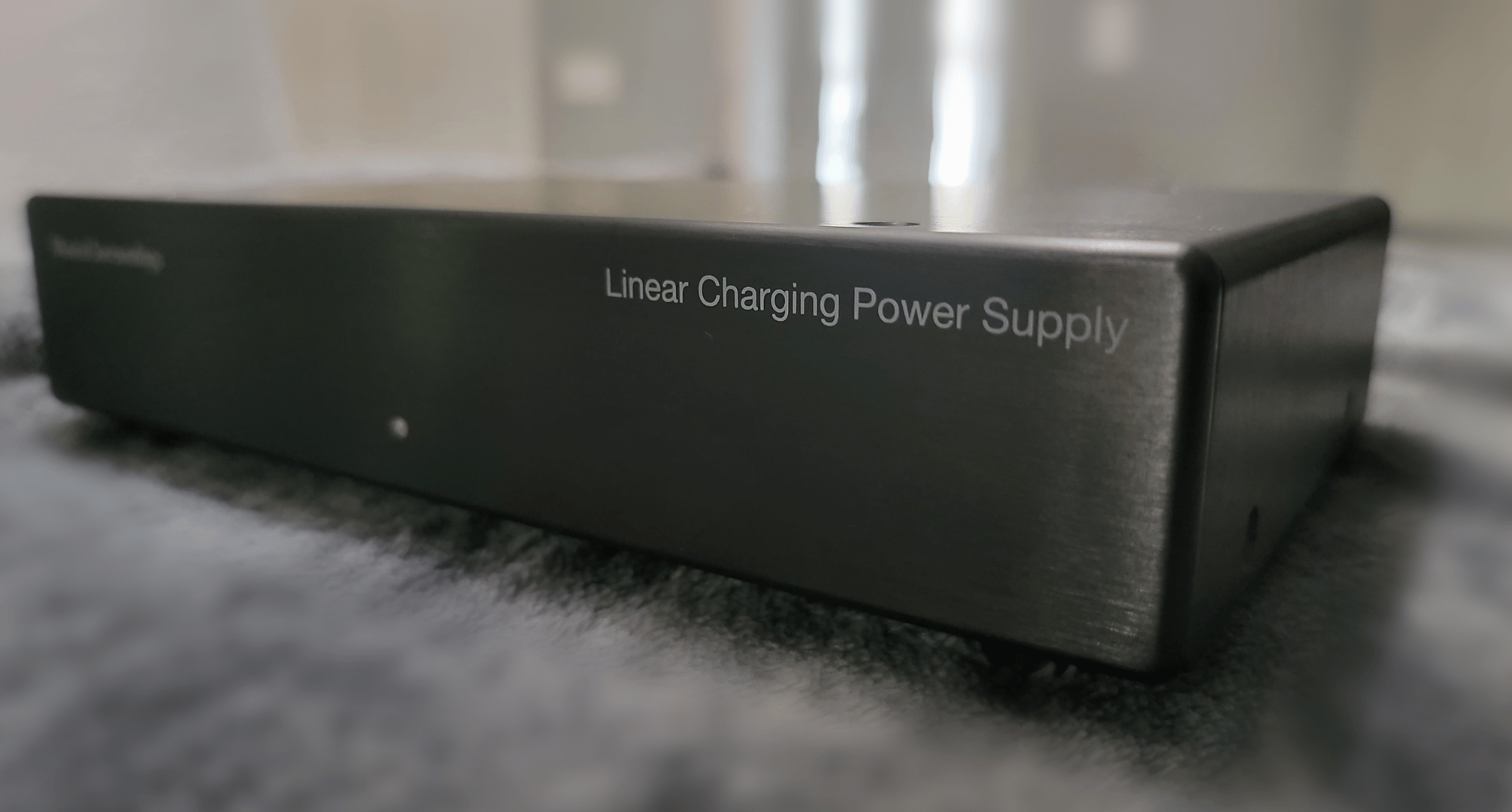 Phonomena III—First Impressions
Phonomena III—First Impressions
I started by simply plugging in the Phonomena III powering it for two days with the standard wall wart, while also plugging in the Linear Power Supply. I have found that most solid state amplification sounds better when always left on. Initial listening was with the standard power supply.
The first thing that caught my attention was the size of the soundstage. It sounded not only wider than what I was used to, but just all around bigger. It was so much bigger, it seemed to widen my sweet spot. The second thing that struck me was the tonal accuracy; instruments just sounded right. The midrange was accurate and detailed, especially female voices.
To really dig into a system I require good imaging. Imaging was spot on and instruments were well defined through the Phonomena III. The center image was well defined and simply huge. The canvas of the music had good height and width, but without an extreme sense of front to back placement.
Over the years I have noticed that speakers that have errors of omission are much more listenable than those that deliver more detail but get aggressive in some areas. I find the same to be true with phono preamps. Although not the absolute last word in all areas, the Phonomena III does well enough in every criteria that it doesn't leave you wanting for more. The outstanding qualities were wide dynamics and huge soundstage.
I enjoy the harmonic expression well designed tube gear produces. This solid state phono stage could have passed for tubes but with better top end extension.
The Phonomena III With Linear Power Supply
Because adding the LPS almost doubles the price of the Phonomena III, I looked at it as almost reviewing two products. So after about a week of listening with the wall wart with the LPS simply plugged in, next was to see if there was a major improvement by adding the upgraded power supply.
Some may think that investing $1,000 on a $1,200 phono stage is silly. Let me remind you that everything that you hear from your system is a modulated version of your wall power. So, with that in mind, I was curious if the Linear Power Supply would elevate this already very good sounding phono stage to a level at which it competes at the $2,500 range.
Upgraded Sound?
Upon dropping the needle, the difference made by LPS was immediate. Everything, and I mean everything, was immediately better. Dynamics noticeably improved and the soundstage was further refined with a more definite space around instruments.
I noted a definitive jump in what I call “clarity”, although at no point did I feel that the Phonomena III out the box sounded veiled or dark. Now, however, the overall clarity was a standout attribute. And the bass… oh yeah, the bass went from slightly rounded (almost tube like bass) to a forceful attack with tight control.
The overall sound tightened up, harmonics were a bit more delicate, the music had a new sense of immediacy, but the bottom end stole the show. It seemed like you could tell from another room that the LPS had been added.
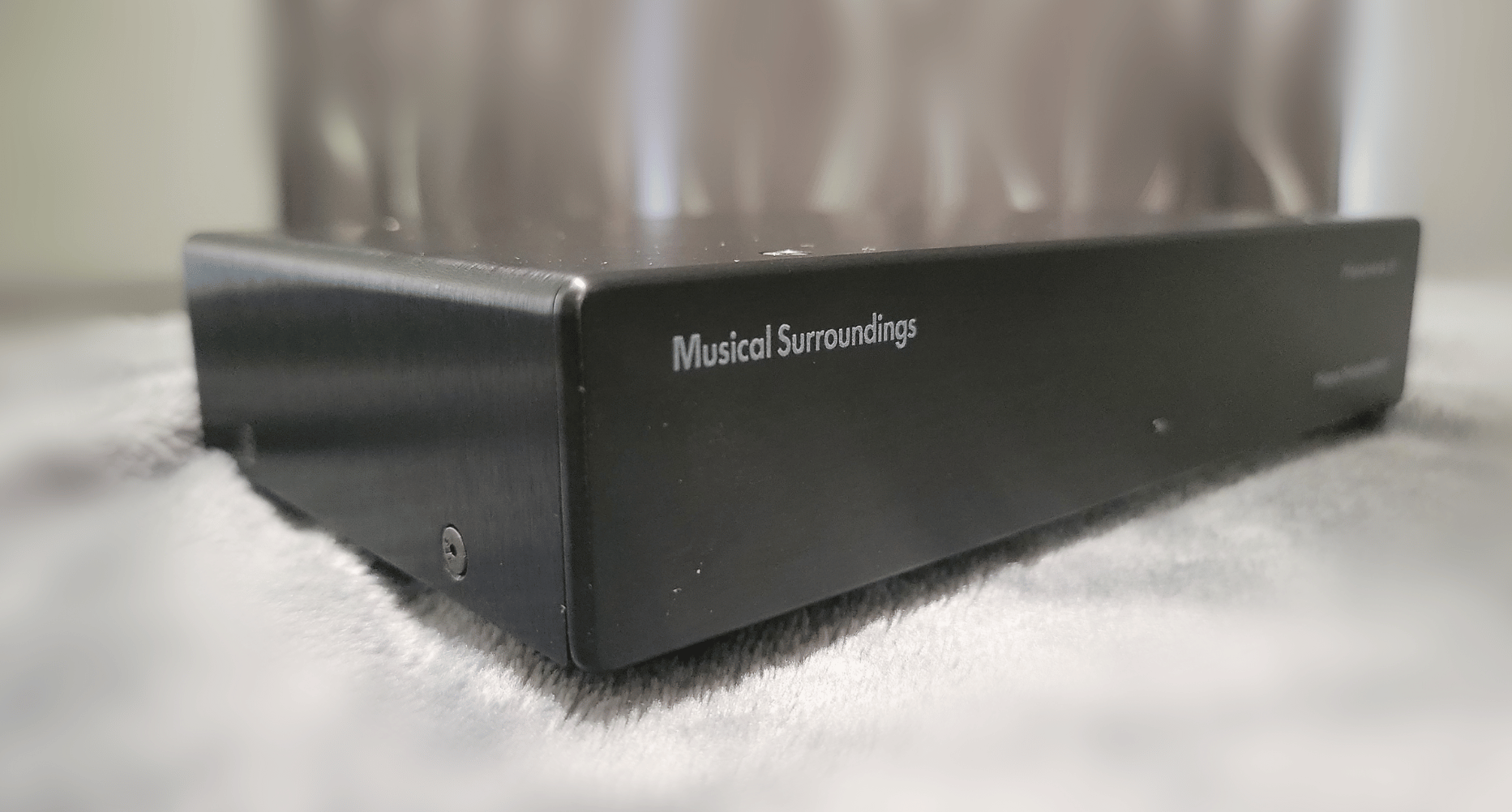 Critical Listening
Critical Listening
With the upgraded Linear Power Supply I felt like I was experiencing a new piece of equipment, so I used it for the remainder of the review.
The overall tonal balance was very lively, open and airy with images placed on a huge soundstage. Dynamics were further improved. The picture was not meek sounding in any way. When listening to female voices, whether Norah Jones, Tori Amos or Janis Ian, I was impressed by the realism, timbral accuracy and vocal size—large but not ill-focused.
The presentation was up front; not from a tonal perspective, but in how I'd describe the imaging. The vocal image seemed to radiate from the speaker's lateral plane forward, as opposed to extending back. In other words, soundstage depth was not the Phonomena III's strongest quality.
The Phonomena III did a good job of hiding its personality and allowing the cartridge's to accurately present itself. For instance with a Grado moving iron cartridge, after tweaking the settings, the sound was bloomy and rich with images presented on a huge soundstage, which is how I expect the Grado to sound.
The Phonomena accurately passed the Hana Umami Blue moving coil's speed, delicacy and critical micro dynamic detail—the small scale subtle level shifts— for which this cartridge is known. The Phonomena III produced a black noise floor behind the signal, regardless of gain setting.
Some Music Please?
"Take Five" from the Analog Productions, 45 rpm pressing of Time Out (APJ 8192-45), had a great sense of the air and studio space of the Columbia Records' famed 30th Street studio space in which it was recorded. The snare drum and toms from Joe Morello's famous drum solo had impressive macrodynamic decay and the macrodynamic slam, even at relatively high volumes (which I do from time to time if I'm really digging the music), was also notable especially given the relatively modest price point.
The Phonomena III's portrayal of harmonic colors and decay—probably a result of the low noise floor— were among the unit's most enjoyable qualities. Although not really "tube-like", the Phonomena III does exhibit the seductive decay heard in well designed tube electronics.
Next up was the Mo Fi pressing of Keb' Mo' - Keb ' Mo' (MFSL 1-357). I'm aware that it's one of those "transferred to DSD 64" but I don't care. Listening to "Kindhearted Woman's Blues", the overtones of Keb's guitar were portrayed accurately and realistically. Micro dynamics, although good, were not the best I have ever heard. Keb's voice was properly large and the acoustic guitar was correctly place on the soundstage.
The bottom end of "Born Under a Bad Sign" from Peter Green's Little Dreamer (Music on Vinyl - MOVLP2259), had a solid feel and great rhythmic drive. Green's signature guitar sound mesmerized as it should.
Because I had just bought 3 tickets to see Lyle Lovett and his Large Band here in New Orleans, I played His Large Band (Curb Records D1-79004). As the name implies, there is a lot going on, on this recording with layers of backing vocals, cello, multiple horns, fiddle and a Hammond B-3 organ.
On side one's first track, "The Blues Walk", the presentation was energetic and powerful. There's nothing sluggish or laggard about the Phonomena III's rhythmic presentation, despite its fine presentation of instrumental decay. Leland Skylar's bass was solid and plump, and you could distinctly hear every note he played while the music floated above the bassline. Drums were as dynamic as I have heard on this record, while the multiple saxophones jumped out impressively in three-dimensional space.
"Here I Am" demonstrated the low noise floor, with the black background spotlighting Lyle's voice and the vocal chorus's dynamic attack. This album can really show off a system's ability to present explosive macro dynamics and this listening session didn't disappoint.
Leland's bass on "Good Intentions" was presented with the appropriately full bottom, while the low level details of the piano and electric and acoustic guitar were delicately delivered, placed effectively across the soundstage.
On "What Do You Do", Lyle's and Francine Reed's voices were presented side by side with great accuracy within inches of each other, center stage. Throughout the album, you could easily distinguish the multiple saxophones from one other while the entire album showed off the Phonomena IIIs ability on all of the instruments to deliver a soothing, yet realistic harmonic decay.
The Upgrade Path
To create their ultimate sub-$1500 phono preamp, many manufacturers invest a significant amount of money into the power supply, which they work to isolate from the signal path electronics. Putting it in a separate box either as a 'wall wart' or in the LPS eliminates the problem and gets you in the door for $1200, with a logical upgrade path waiting when the upgrade bug bites. You get great sound at either price point, though one is clearly superior.
Another thing Michael Yee said when asked about the new Phonomena III was:
“My secret configuration is to use 2 Phonomena IIIs so I have dual mono operation.”
I have not verified the difference in going dual mono, but I will have to take Michael Yee’s word for it. That had me thinking: you could start your journey at $1,200 with the Phonomena III. Then, with a $1,200 upgrade, move to 2 Phonomena IIIs in dual mono. Finally, upgrading both Phenomena IIIs with their own Linear Power for another $2,000. Or you could start with 1 Phonomena III, then go to the LPS, then do another pair. There are mulitple upgrade paths to take and going over all of them in my mind is making my head hurt a little bit.
A $1,200 Phono Stage or a $2,200 Phono Stage?
The Musical Surroundings Phonomena III priced at $1,200, has a good bit of competition in the phono stage world. I can wholeheartedly say it is a formidable competitor with anything in that range and easily could turn the list of 5 Phono Preamplifiers We Like to 6. The immense flexibility to mate with any analog front end makes it even more appealing.
With the Linear Power Supply, the Phonomena III comes in at $2,200, where there are also many outstanding phono stages available. Once again, Michael Yee has produced a phono preamplifier that should be on your short-list in the sub $3,000 price range.
At either point, the Phenomena III is a great sounding phono stage, with sufficient flexibility to get the most from your other equipment and it offers a myriad of upgrade paths.
All of which makes the Phenomena III a very practical phono preamplifier.
Specifications
Musical Surroundings Phonomena III Specifications
Gain Switches: 40,46,49.5,50,52,54,55.5,56,58,60.5,61.5,63,64,66
Input Load Switches (Ohms): 30,40,50,59,80,100,121,150,243,2780,380,475,660,1k,2k,47k,100k
Capacitive Loading Switch (pF): 100pF, 200pF
Dimensions: 8.5"w x 6"d x 2"h
Weight: 3lb
Warranty: 3 years with registration
Musical Surroundings Linear Power Supply (LPS)
Dimensions: 8.5"w x 6"d x 2"h
Weight: 3lbs
Warranty: 2 years
Manufacturer Information
Musical Surroundings
Oakland, CA, United States
https://musicalsurroundings.com/
Tel: 510.547.5006
Fax: 510.547.5009


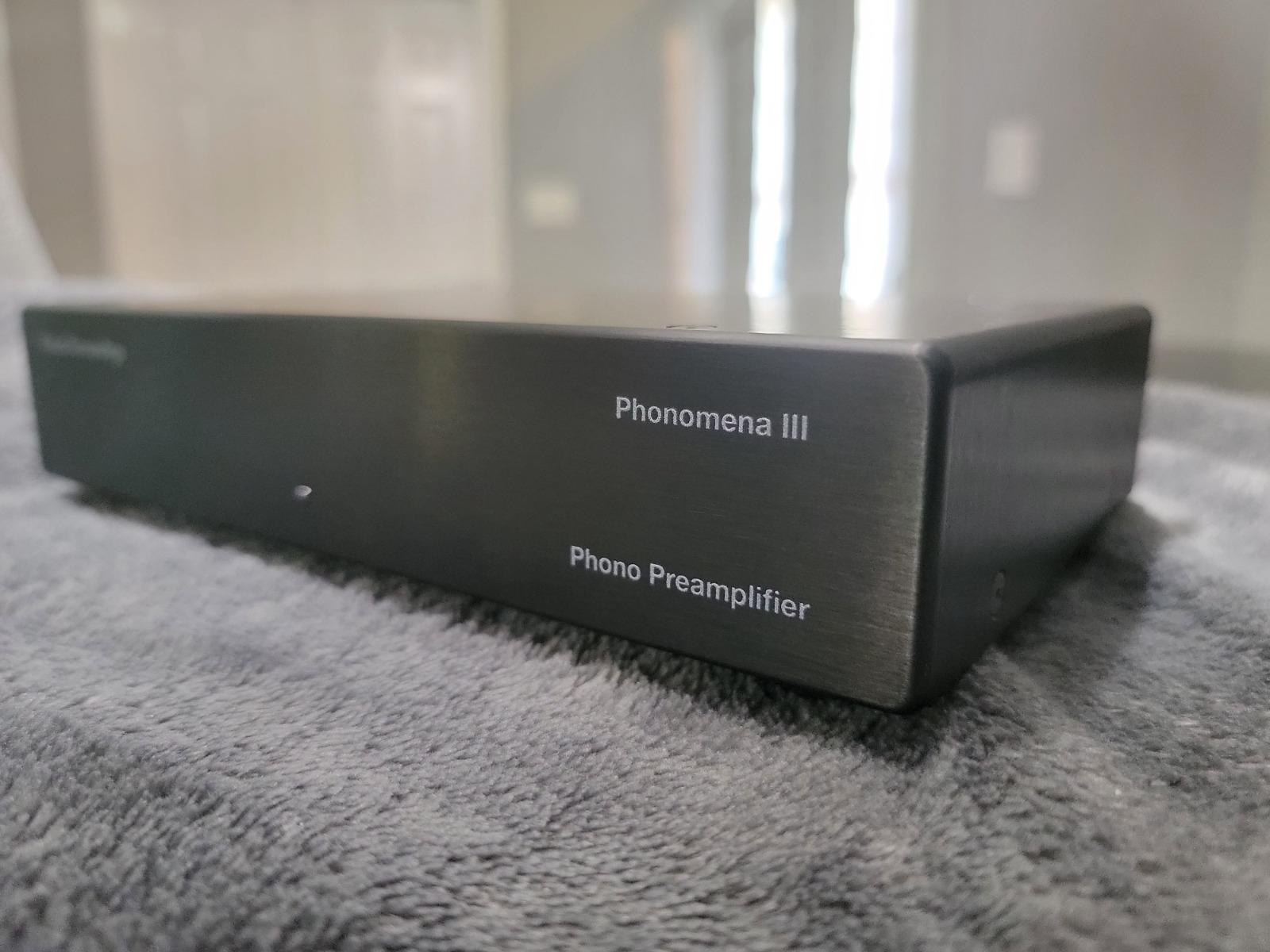
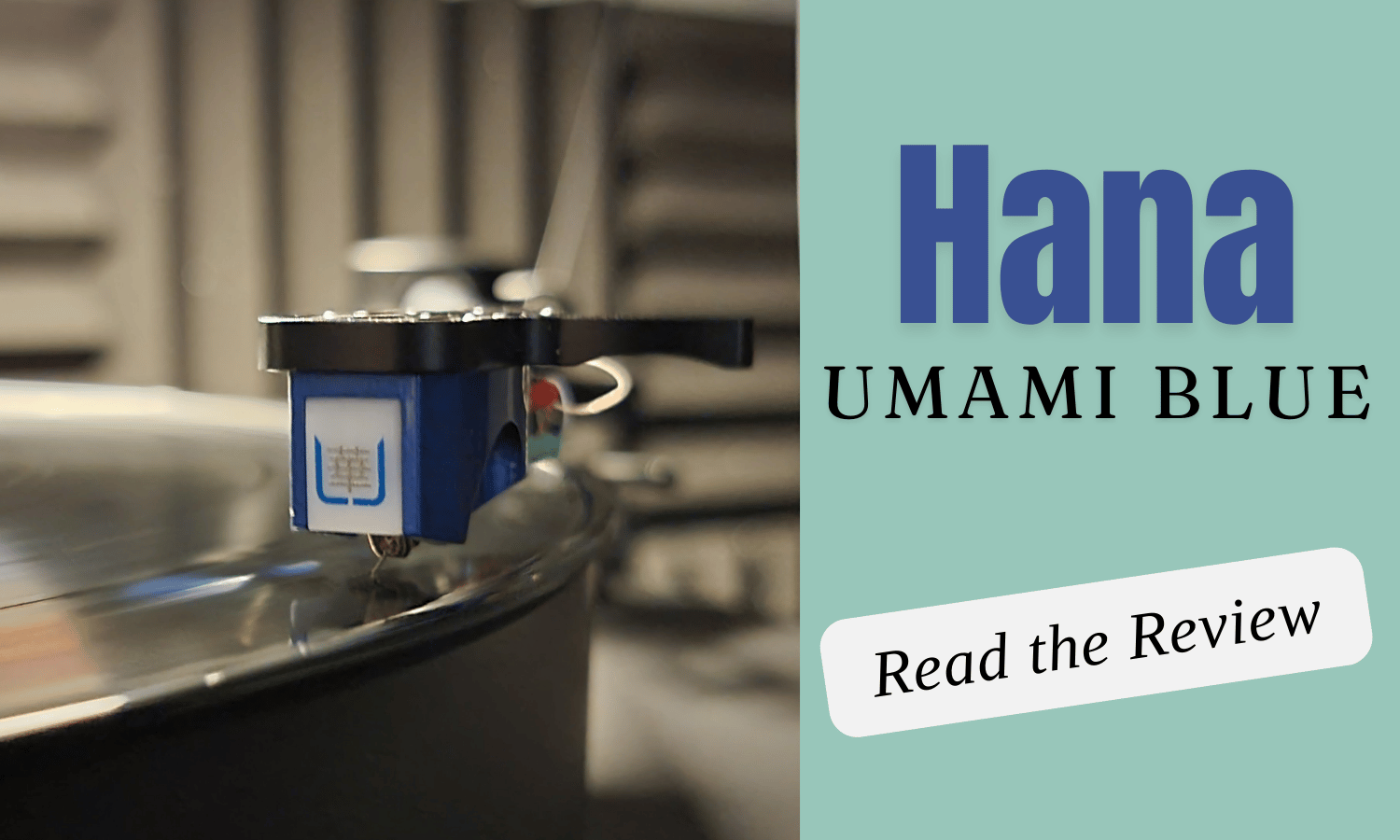







































.png)








